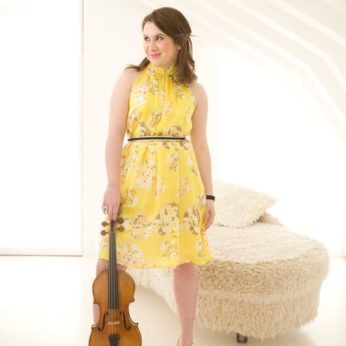Composer: Ludwig van Beethoven (b. 1770 - d. 1827)
Performance date: 04/07/2015
Venue: St. Brendan’s Church
Composition Year: 1801
Duration: 00:16:27
Recording Engineer: Richard McCullough, RTÉ lyric fm
Instrumentation Category:Trio
Instrumentation Other: fl, vn, va
Artists:
Phillipe Bernold -
[flute]
Chloë Hanslip -
[violin]
Lilli Maijala -
[viola]

This
delightful work was published in 1802 by Cappi in Vienna. There are sketches for
it as far back as 1796 but experts suggest the finished work as being from
1801. This would place it after such masterpieces as the First Symphony, the
first two Piano Concertos and the first set of String Quartets, and the
sophisticated style and wit is clearly that of the rapidly maturing composer. A
Serenade at that time would have
suggested a musical work for the evening, perhaps to be played in the
background at a party or aristocratic social gathering. It begins with an Entrata, an initial piece meant to accompany the arrival perhaps of
the host or some important guest. There is a bird-song quality to this
movement, followed by a graceful Minuet
with two contrasting Trio sections,
interposed to add extra colour. Beethoven
follows the Minuet with the first of
two lively Scherzos, which changes
mood for its hard driven Trio.
The
Variations movement provides some respite, with a serene theme such as one
might find in the later Quartets and initially given to just the strings before
the flute picks up the melody. Each instrument
has its own variation beginning in a lively mood with the flute whose witty staccato
comments alternate with virtuoso flourishes. The violin picks up the tempo for
its contribution before the viola broadens out the melody before decorating it
even further. The coda brings us back to the theme and there’s a witty
postscript to round off the movement.
The tempo quickens up again for the chirpy little
scherzo, another whirlwind affair,
with a short Trio to cool the pace. The
fun quickly returns as the Finale starts with a graceful slow dance which
suddenly bursts into a high-speed theme allegro
vivace e disinvolto (very fast and
carefree). This is in fact a rondo movement, with the first theme reappearing between
a series of three contrasting episodes.
Then to ensure the festivities are fully enjoyed the Serenade suddenly
slows down before accelerating into a Presto conclusion.
Copyright © 2024 West Cork Music. All rights reserved.
Designed and developed by Matrix Internet